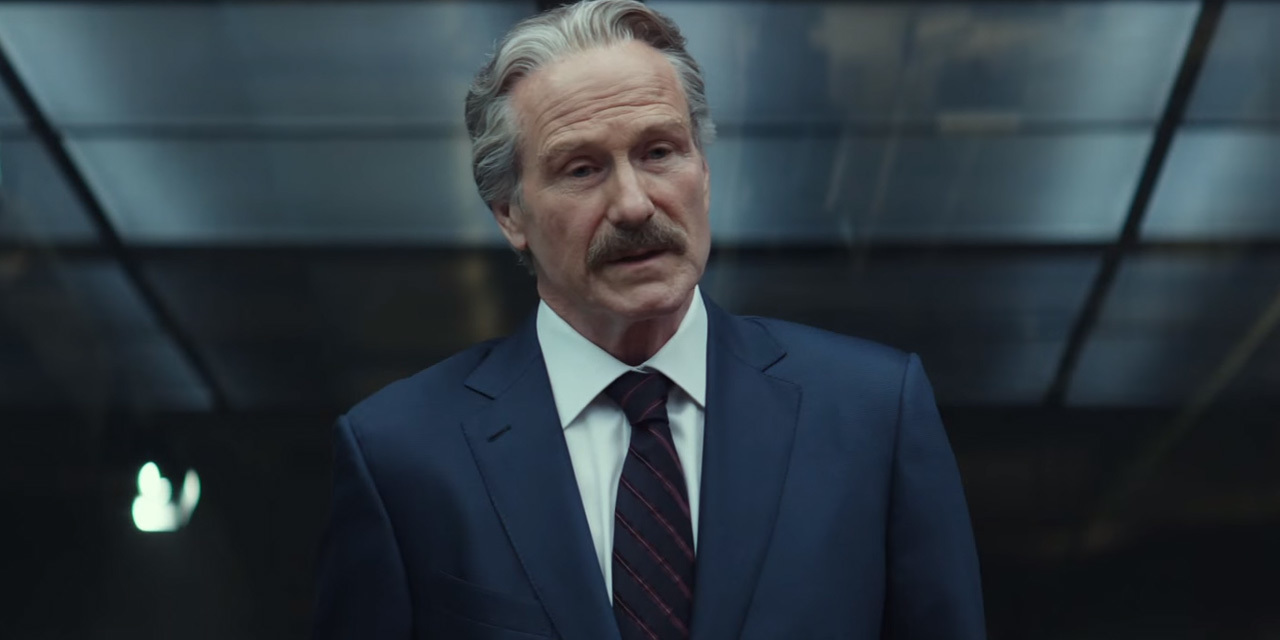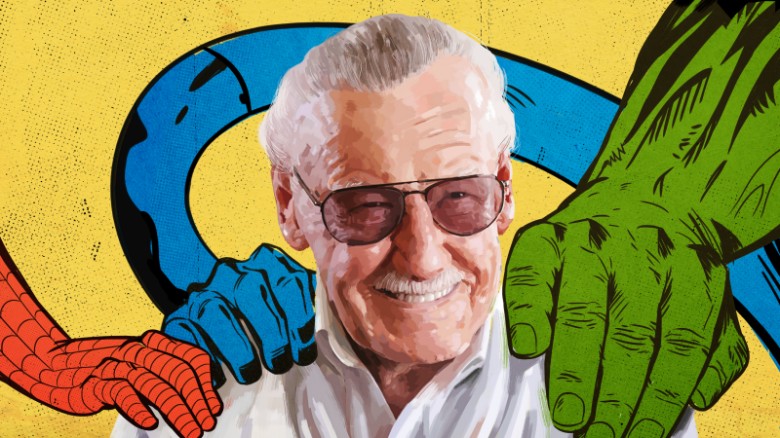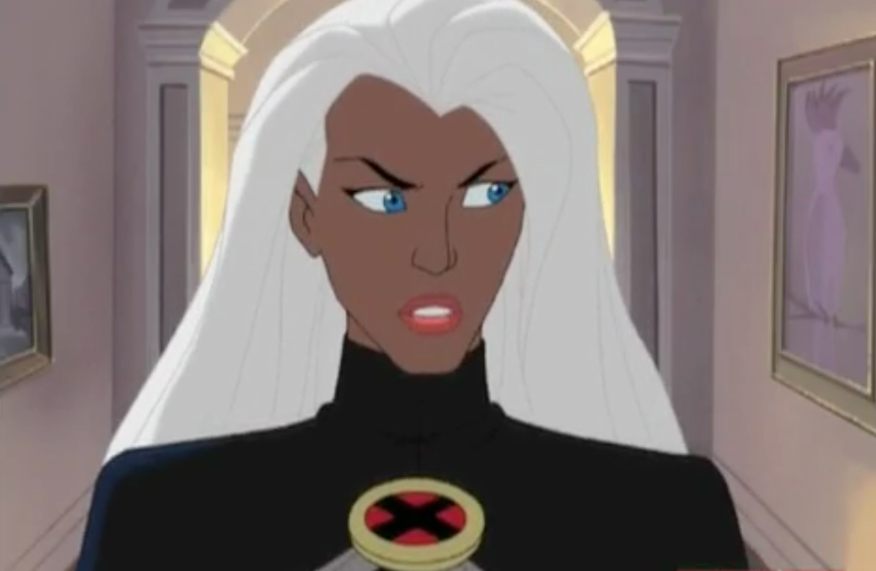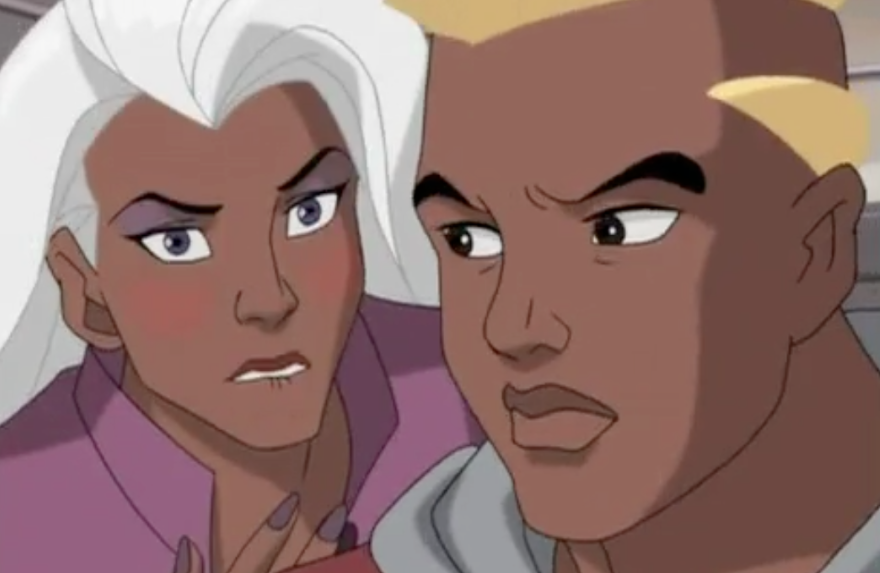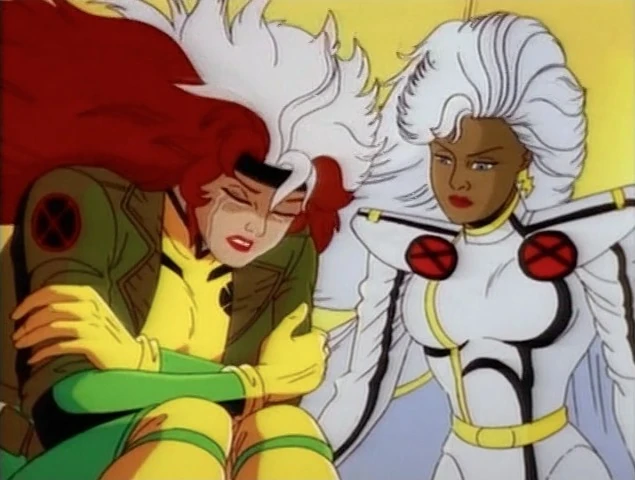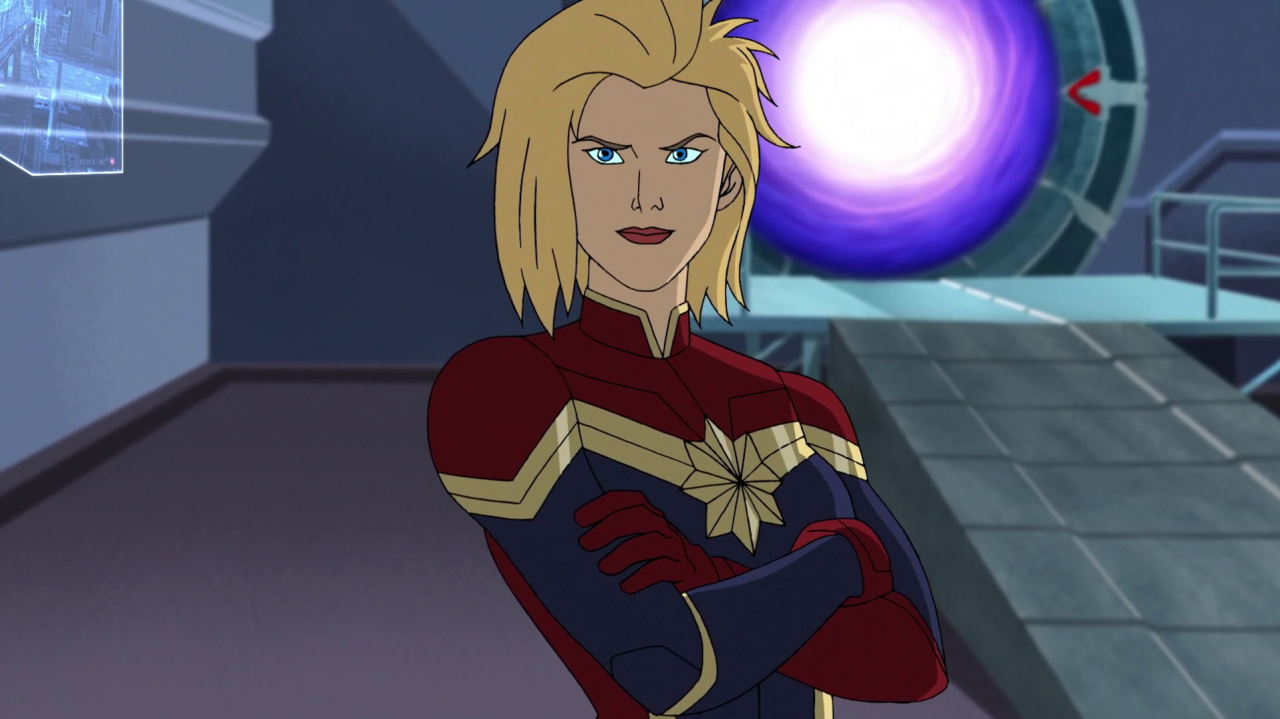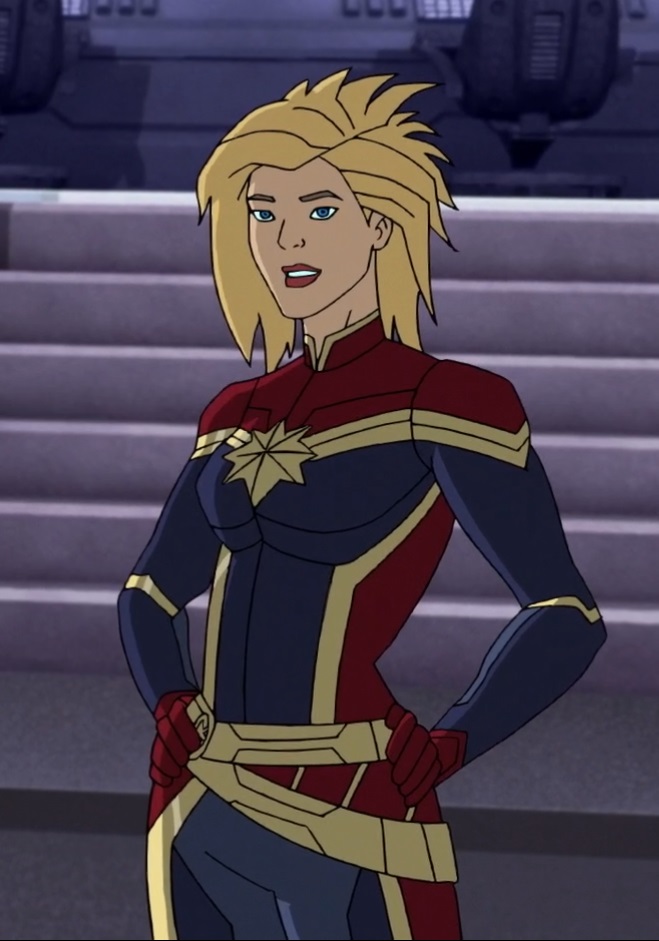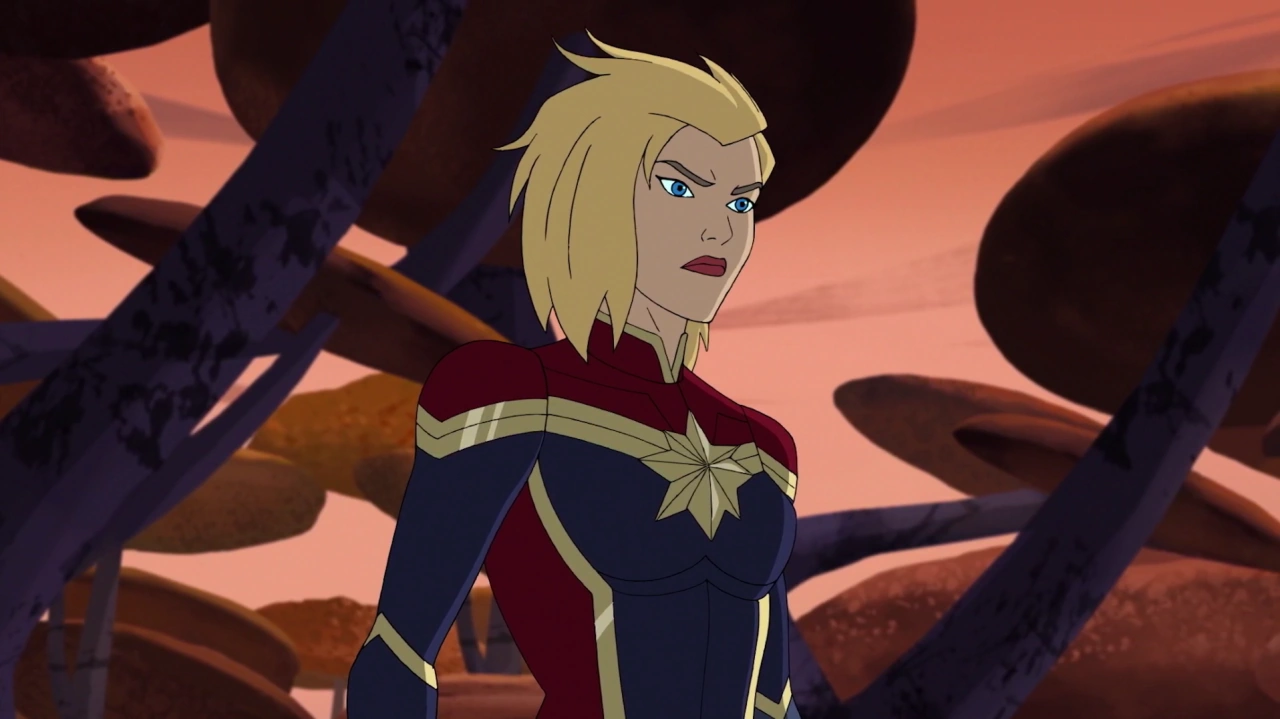 It has been a while since I saw a film villain who made me grit my teeth and grip my armrests in pure, frustrated anger. Captain America: Civil War’s Secretary of State, Thaddeus “Thunderbolt” Ross, has achieved what even Loki managed to avoid. He earned my undying ire.
It has been a while since I saw a film villain who made me grit my teeth and grip my armrests in pure, frustrated anger. Captain America: Civil War’s Secretary of State, Thaddeus “Thunderbolt” Ross, has achieved what even Loki managed to avoid. He earned my undying ire.
Oh, sure, I do not like Loki. He invaded the mind of one of my favorite characters and turned him into a killing machine for three days. That is not a way to win Brownie points with me; he has my lasting dislike for it. And, in truth, there is very little daylight between Loki and Ross. The difference is that Loki has a twisted sense of humor that manages to make the audience laugh. Remember that “Ta-da!” of his after he, Thor, and Jane, had escaped to the Dark Elves’ homeworld from Asgard? I have to admit, it was a funny line and it made me smile.
Ross had no funny lines in Civil War. Come to think of it, outside of his appearances as the Red Hulk in Agents of S.M.A.S.H.,Ultimate Spider-Man, and now Avengers Assemble, Ross has never really demonstrated a sense of humor. In previous cartoons and comics, he was always bellowing like an angry bull or shouting with fury. Not a friendly characterization, to say the least!
In Civil War, though, Ross leaves his bullhorn at the door for the most part. He speaks softly here and carries a big stick.
That “big stick” happens to be the Sokovia Accords. After the accident in Lagos, Nigeria, the U.N. dispatches Ross to present their ultimatum to the Avengers. And Ross lays it all out in his speech when he first shows up in the Avengers’ Compound: the governments of the world have decided they can no longer tolerate the Avengers as free agents. And they cannot accept it in part because the team is based out of the United States, is made up mostly of American citizens (Tony, Rhodey, Clint, Cap, and Sam are all native U.S. citizens while Natasha holds U.S. citizenship), and therefore the Avengers have an inherently American penchant for policing injustice abroad as well as at home.
 Did anyone else notice that when Ross listed what the Avengers had done for the world, he never mentioned that they had died for it? Quicksilver is swept under the rug in this film, not by the Avengers but by the government, whose proxy is Thunderbolt Ross. The Secretary of State never mentions that the Avengers, too, suffered a personal loss in the disaster in Sokovia. Pietro Maximoff was a member of the team for only a short time, which is surprising (NOT) since bureaucrats are naturally inclined to fuss over whether or not all the i’s have been dotted and all the t’s crossed…
Did anyone else notice that when Ross listed what the Avengers had done for the world, he never mentioned that they had died for it? Quicksilver is swept under the rug in this film, not by the Avengers but by the government, whose proxy is Thunderbolt Ross. The Secretary of State never mentions that the Avengers, too, suffered a personal loss in the disaster in Sokovia. Pietro Maximoff was a member of the team for only a short time, which is surprising (NOT) since bureaucrats are naturally inclined to fuss over whether or not all the i’s have been dotted and all the t’s crossed…
But the fact is that Pietro Maximoff was accepted by the Avengers as a member of the team. It was not put down on paper and made official because time was of the essence. But it was a fact, just as it is a fact that Quicksilver died in defense of his country and mankind at large.
It is a fact Ross ignores, thereby forcing the Avengers to ignore it. Why? Because Quicksilver’s heroic death does not help his agenda. Throughout Civil War, Ross continually plays the guilt card on the Avengers. If he were to mention Pietro’s death, it would lessen the impact of that trick because then the Avengers could turn around and point out the fact that they lost someone in the disaster in Sokovia as well.
So Ross does not give them a chance to bring Quicksilver into the debate. He makes sure the argument is all about them and whether or not they should sign the Accords. And he does this by playing off of their guilt, or attempting to play off of it.
You see, the guilt card has no more effect on Steve, Sam, or Clint than a bug buzzing by their ears would. These men have known remorse and loss, having persevered through it several times already. Steve lost several friends in World War II, most notably Bucky on that mission in the Alps. Then he lost everyone and everything he knew during his seventy year hibernation. Sam lost his wingman in Afghanistan on a night mission. He has had to live with the knowledge that there was no way he could have saved Riley, while still feeling he should have saved him. Clint was used to kill a number of people over the course of three days in Loki’s scheme for world domination, and he saw Pietro die to save his life and that of a young child. But he made it through the remorse he experienced after these incidents in one piece, mentally and morally.
Ross is therefore unable to play on these three Avengers’ guilt because they were mature and endured it, finding the light beyond. As Cap explains to Wanda, they learned to live with their failures. They accepted them, and so they have control of their sense of shame.

Sadly there are two Avengers who do not have control of their sense of blame. The guilt card hits home with Tony and Natasha, as they have kept their “guilt wounds” open and fresh over time. Tony has been carrying remorse over the fact that he wasted his life in frivolous pursuits while allowing Stane and others in his company to deal his weapons under the table to America’s enemies. He thereby allowed a lot of bad people to kill innocents all over the world (i.e. Pietro and Wanda’s parents), as well as the American soldiers his weapons were meant to protect.
Now he is again being confronted with people who blame him for their losses, such as the woman in the back hall of MIT. Not once, you notice, does he think to remind this woman and others like her that he lost a young teammate in Sokovia, too, and therefore he has some idea of what she and these others are going through. Also, now that Pepper (who may still be dealing with the psychological aftermath of receiving the Extremis serum), has pushed herself away from Tony, he feels guilty about “losing” her. Instead of doing something about this, he just accepts the blame and adds it to the pile he is already carrying around.
Natasha’s vision in the boneyard in Africa, courtesy of Wanda Maximoff, demonstrated that she still feels a great deal of guilt over her service to the U.S.S.R. As I have said elsewhere, she has not yet forgiven herself for the crimes she was forced to commit. She is still trying to “get even” with the past, and that is not going to work, for the simple fact that the past is gone. All she and the rest of us have now is the present.
Ross knows that these two Avengers will be easy to guilt trip. Neither of them had good support structures growing up; Tony essentially hated his father for his success while Natasha’s only family was the government, which abused her from childhood. Tony’s poor relationship with his father, who built a business empire from the ground up, meant he only had a sympathetic understanding from his mother, whom he was closer to for that reason. As long as Ross shows him some sympathy, Tony will quite literally roll over to meet his demands so that he can make the pain of his guilt “go away.”
With Natasha, however, Ross uses a different tack. Natasha’s upbringing by the Soviet Union taught her that the government could – quite literally – do anything to her and get away with it. Ross just has to threaten her and, no matter how vaguely phrased the warning, she will get the message: Fall in line or we will hurt you and no one will be able to protect, help, or save you.
Rhodey does not need the guilt card played on him. He has been trained by the Air Force to follow orders no matter what. All Ross has to do to get him onboard is flash his medals and present the Accords as an order from the top brass. Boom – Rhodey signs on the dotted line faster than you can sing the Air Force anthem.
 You might think that Vision would leave Ross bemused as to what to do, since he is a synthetic being. But Vision has to be the most easily suckered member of the Avengers after Rhodey. Ross presents the Accords to him as an equation, a mathematical theory, and he sees the law as inevitable. Chalk up another signature for the U.N.
You might think that Vision would leave Ross bemused as to what to do, since he is a synthetic being. But Vision has to be the most easily suckered member of the Avengers after Rhodey. Ross presents the Accords to him as an equation, a mathematical theory, and he sees the law as inevitable. Chalk up another signature for the U.N.
As for Wanda – hah, piece of cake. Her error in judgment in Lagos has left her feeling guilty. That is why he plays footage of the destruction from Crossbones’ bombing, not to mention film from the other battles we have seen the Avengers fight over the years. It is to target Wanda and the others, to make them feel more guilt. With those images of Lagos hovering in her mind’s eye, Wanda will naturally want to prevent future mistakes of a similar nature. Her signature will be the first one on the paper.
Except that Wanda surprises Ross by pushing the Accords to Rhodey. I bet he did not see that coming. (Shout-out to Pietro! 😉 )
Did Ross think he could get Cap to sign the Accords? It is hard to say. Having dealt with soldiers who are trained to simply follow orders, and being accustomed to shouting down those soldiers who questioned him, it is possible that Ross believed he could basically order Cap to sign the Accords and the First Avenger would do it. But in light of the SHIELD/HYDRA war from The Winter Soldier, this seems to be a pretty stupid assessment on Ross’ part. While my opinion of Thunderbolt Ross’ intelligence is not high, I think that he may have figured that Steve would be resistant to registration. In fact, he probably wanted him to resist it – more on that in a minute.
Sam probably got lumped in with Rhodey in Ross’ calculations. As a former soldier, Ross might have thought that Sam would roll over to the Accords when they were presented to him as an order, too. However, in light of his aiding Cap in the previously mentioned war between SHIELD and HYDRA, Ross may have surmised that the Falcon would again side with Steve Rogers.
Either way, the team is divided about what to do with the Accords after Ross leaves, just as he wanted. The seeds of Chaos are sown. And they bear fruit sooner than Ross could have hoped when Zemo bombs the United Nations building in Vienna, Austria, and frames Bucky Barnes for the deed.
But we do not see Ross again until Berlin, after Cap, Sam, and Bucky have flown the coop. As he berates Tony and Widow, Ross lets a very important fact slip out. I had to watch the film again carefully to really take notice of the trip: Ross said that if Cap had not interfered in Bucharest, Bucky “would have been eliminated.” This means that the intent of the people in charge was never to capture and incarcerate Bucky.
Sharon Carter’s statement that the Task Force had been given shoot-on-sight orders is one thing. Up against a super soldier with a metal arm, most normal humans do not stand a chance. Giving them permission to shoot-on-sight hopefully will preserve their safety.
But sending in a military chopper with a mini-gun to shoot up a city block in order to bring down the Winter Soldier is way too much. This all adds up to a very frightening fact: Ross and his bosses wanted Bucky dead from the beginning. It was never about capturing, containing, or imprisoning the Winter Soldier. It was never about finding justice for those killed in the bombing of the Accords in Vienna.
 It was about murdering Bucky. Not killing him in self-defense, not killing him to protect the public, but to murder him on account of a crime he had not been definitively proved to have committed. He was presumed guilty, not innocent, based on his past record and not on any new evidence. The evidence the Task Force, CIA, and Ross did possess was circumstantial, bordering on coincidental. But they ran with it anyway.
It was about murdering Bucky. Not killing him in self-defense, not killing him to protect the public, but to murder him on account of a crime he had not been definitively proved to have committed. He was presumed guilty, not innocent, based on his past record and not on any new evidence. The evidence the Task Force, CIA, and Ross did possess was circumstantial, bordering on coincidental. But they ran with it anyway.
Ross and the U.N. never questioned ANYTHING about the circumstances of the bombing. They planned to kill Bucky as soon as they knew where he was. The bombing simply gave them an excuse to feed the public and to avoid answering awkward questions about what they were doing.
If that does not chill you to the bone, readers, then nothing will.
In light of this fact, how does Tony’s prior statement to Cap about Bucky being transferred to an American “psych-center” hold water? Tony believed what he said, I am sure, and Cap bought the idea until he found out about Wanda’s incarceration in the Avengers’ Compound. In light of Ross’ statement that the initiative was to kill Bucky from the beginning, though, I find any suggestion of his transfer to an American psychiatric hospital highly suspect. What was to prevent the men transporting him from killing Bucky in transit, and then claiming afterward that he “…broke his restraints and attacked/killed some of our men, so we had to kill him”?
The answer is: nothing. They could have done this easily – governments around the world have done this numerous times, without serious difficulty, to people they wanted silenced and out of the way. If Cap had not “interfered” in Bucharest, then Bucky would have ended up dead at the governments’ collective hand.
Another thing to note is that, in this interview, Ross again plays the guilt card. Immediately after mentioning that Bucky would have been “eliminated” in Bucharest, he rubs the fact that the Winter Soldier killed several Germans before he escaped in Tony’s face.
What he neglects to point out is that parties unknown set off the EMP bomb which knocked out the cameras and electronics for the base. Therefore, no one but Cap, Sam, and the psychiatrist know what really happened while the lights were out. Another thing which Ross does not mention in his little tirade here is the fact that the psychiatrist the Task Force called in is not among the dead – and he sure as hell was not walking around the base!
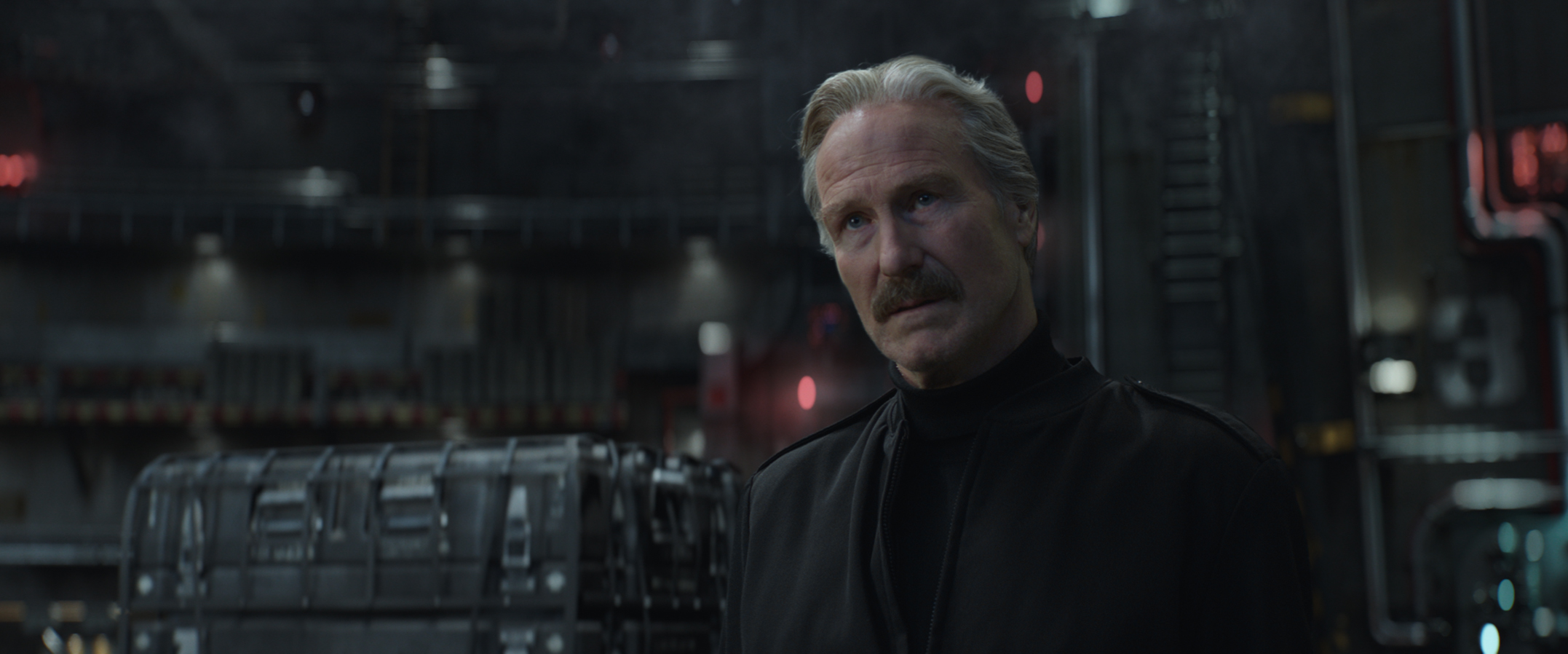 Why did Ross leave these details out, hmm? Did he believe that Tony and Natasha did not deserve to know these things, or that they did not need to know them? If I had to bet, it was the latter. Ross left these facts out intentionally, just as he “failed” to bring up Pietro’s death in Sokovia: these specifics did not serve his and his masters’ agenda.
Why did Ross leave these details out, hmm? Did he believe that Tony and Natasha did not deserve to know these things, or that they did not need to know them? If I had to bet, it was the latter. Ross left these facts out intentionally, just as he “failed” to bring up Pietro’s death in Sokovia: these specifics did not serve his and his masters’ agenda.
This is why Cap would not condone or sign the Accords. In this film, Ross proves that he is no better than Nick Fury. Actually, he proves that he is worse. Fury may use any means necessary to get the job done, but he has never guilt-tripped any of the Avengers into fighting a battle or cleaning up one of his messes to the extent that Ross does in Civil War. Ross does nothing in this film but bully and berate the Avengers who have signed the Accords into doing what he wants them to do, hounding them to do it his way, or they will be pushed aside.
The proof of this comes after Ross states that he will have to be the one to bring in Steve, Sam, and Bucky. Natasha then asks him pointedly, “What happens when the shooting starts – are you going to kill Captain America?”
I can hear the “voices of moderation” chiding Ross right now: “No way,” “Cap’s too important,” “He’s a national symbol; if you kill him no one will ever forgive you for it.”
But Ross dispels all of these valid arguments in one little sentence: “If we’re provoked.” To the masters behind the Accords and their deputies (Ross), even Cap is expendable. Especially when he stands in their way, demonstrating by his actions that he knows they are tyrants – although they say otherwise – and that he is not going to bow to them today or at any time in the future.
This blatant threat sends Tony into panic mode, and he “wins” a thirty-six hour deadline from Ross to bring Cap, Falcon, and Bucky in alive. He never stops to think that, if Ross and the U.N. consider Cap disposable, then he is no safer than Steve despite the fact that he signed the Accords. It never occurs to him because his ego is too damn big. Tony believes he is indispensable, and he is right, from our perspective and that of the Avengers. Every human life is far more important than we can truly apprehend, as the Avengers (including Tony) know for a fact.
Ross and his puppet masters, however, have a very different, very selfish view of the lives of others: Tony and the Avengers who have signed the Accords are only important as long as they toe the government’s established line. Once they step out of line, as the anti-Accords Avengers have, then they become threats which have to be eliminated. Just like Bucky, they can be killed out of hand any time it becomes convenient.
We are going to detour here to look at the airport battle in Germany. It is an amazing fight, from a visual standpoint. Everything from Hawkeye’s newest arrows to Ant-Man’s growth to Giant-Man, from Panther’s fighting skills to Spider-Man’s first appearance in the Marvel Cinematic Universe, is visually spectacular. We could watch that battle time and again, and still we would notice things we had missed before.
But for the moment, let’s step back from the battle and watch it from Ross’ position. To us, while visually stunning, the battle is also heart wrenching. Aside from Ant-Man, Black Panther, Spider-Man, and to an extent Bucky, all the people involved in this fight are friends with each other. We have traveled with these characters for years and know that they care about each other. Now we are watching them fight, not in a friendly way but in an angry, dangerous manner. Team Cap, though they fight hard, are not fighting with the intent to maim and kill. Team Iron is at least willing to maim, if not kill, and that makes the battle all the harder to watch.
But from Ross’ perspective, this is exactly what he desired. The Avengers on Team Iron have given him precisely what he wanted: another battle which he can use against them, more damage he can exploit to control them. He has to be enjoying every minute of this as only an enemy can.
Because, readers, who benefits from this battle? Does Team Cap? Bucky and Steve grab the Aveng-jet and run, but the rest of their team gets locked up in the Raft to rot. Does Team Iron benefit? They help lock up their own teammates in a maximum security prison built for the worst kind of criminals, Rhodey ends up with severe damage to his spine, and the strength of the Avengers’ team is more than halved. Everyone but Rhodey and perhaps Vision abandons Tony by the end of the film. Natasha walks out on him, T’Challa leaves, everyone on Team Cap is off the grid and on the run, and Spider-Man is back in NYC doing his own thing. How does this help Team Iron? At least Team Cap is still together – and they have gained a couple of new members in the process: T’Challa and possibly Black Widow.
The only people who benefit directly from the Avengers’ battle at the airport are Ross and the pencil pushers in the U.N. How do I know this? Tony shows up at the Raft after the fight to see Sam and tell Ross about Zemo, only to be informed that he is grounded until further notice. Ross explains that the mission is “out of [Tony’s] hands” after the “stunt” he pulled in the Leipzig airport. Notice, Ross never says, “We’ll take it from here” or the equivalent thereof. He just says the issue is no longer Tony’s concern. And he is using the airport battle – which he orchestrated – as a reason to push Tony away from the search.
Then he lets Tony into the command center for the prison, where Iron Man sees Wanda on a monitor. She is huddled up in her cell, wearing a straight jacket and an inhibitor collar. Presumably she is just cold and lonely, but how do we know the guards did not “have a little fun” with her before they snapped that straight jacket on her, huh? When was the last time she ate or had anything to drink? Does Ross have the environmental controls in her cell set to a comfortable level? It did not look like it to me. The guys were not shivering; they looked to be at least warm, if not fed. Wanda did not look like she was warm; she looked dangerously close to contracting pneumonia!
Speaking of the guys, what does Ross do when Tony goes in to see Sam and Clint gives him a piece of his mind?
 Ross smiles. It is not a big smile, but it is there. I saw it both times I went to the theaters to watch the film, but it is harder to see on the smaller screen. Ross smiles because he has exactly what he wanted; the Avengers are divided, the team members who refused to sign up to be his puppets are incarcerated, and he has all the ammunition he needs to keep Tony in line. If Tony starts “misbehaving,” all Ross has to do to keep him obedient is threaten to hurt the incarcerated Avengers – or suggest that he will throw Tony in with them. Just like that, Stark will roll over and play dead for him. He plans to “break” Tony’s “back” at the first opportunity.
Ross smiles. It is not a big smile, but it is there. I saw it both times I went to the theaters to watch the film, but it is harder to see on the smaller screen. Ross smiles because he has exactly what he wanted; the Avengers are divided, the team members who refused to sign up to be his puppets are incarcerated, and he has all the ammunition he needs to keep Tony in line. If Tony starts “misbehaving,” all Ross has to do to keep him obedient is threaten to hurt the incarcerated Avengers – or suggest that he will throw Tony in with them. Just like that, Stark will roll over and play dead for him. He plans to “break” Tony’s “back” at the first opportunity.
Still think the Accords are a good idea? Still think Ross is not a villain? He is, and he is just as bad as, if not worse than, Loki. Both Ross and Loki are control freaks. Loki wants to control people so that he can be lauded and adored for the rest of his life, because he felt he was in Thor’s shadow while they were growing up. That is what makes him a full-tilt diva who “….wants flowers [and] parades” in his own honor.
Ross has a different aim in mind. He does not want adulation and veneration. He wants control for its own sake. Remember how, in the comics, Ross was always berating and yelling at Bruce Banner? Why do you think he did that – not just to Bruce but to everyone else around him, including his own daughter?
Ross is obsessed with having power over others because he is a small man with a small mind, who wants to be an important man in a big world. He is a tyrant. How does someone small become someone big? Well, foregoing the gamma ray method, there are several options. Most of them are highly unpleasant and end right where Ross is: the small man gets his hands on the levers of power, where he gleefully begins to make everyone else’s lives miserable so that he can prove he is in charge.
Fury never went this far. I do not like him especially, but the fact is that Fury worked his way up the ranks to Director of SHIELD because he saw the threats multiplying like mosquitoes and knew that, at the bottom of the ladder, he could never protect as many people as he needed. Ross does not care about the threats facing humanity, the world, or the United States. Not like Fury does. At best, Ross considers these dangers minor worries. Most of his attention is centered squarely on his own navel.
This is what drives everyone away from him: the U.S. soldiers he commanded in the army, Bruce, and most importantly, Betty. Why did Betty never get along with her father? Why did she leave him? She left him because he did not care enough about her to sacrifice his own ambitions and desires for her happiness. Ross always blamed the Hulk for taking Betty from him, but who is responsible for the Hulk’s creation? Yes, Bruce might eventually have become the Hulk even without Ross breathing down his neck. But it was Ross’ constant push for him to hurry up which made Bruce try the gamma experiment too early. It was Ross who determined that the Hulk and Bruce Banner were monsters who were unworthy of saving, and that they were better off as his personal cannon fodder.
This is what drove Betty away. Ross’ single-minded pursuit of his own agendas left no room for her, and after a while, she got tired of trying to insert herself into his life. All he did when she managed that was push her out again. Bruce always made time for her; he always put her ahead of his own wants and needs, to the point that he left her to protect her. Is it any wonder that she preferred him to her father?
Ross can play the guilt card on Tony and Natasha so effectively because his own hubris has anesthetized him to any sense of personal guilt. Despite this, he knows when other people are feeling guilty and how to use that guilt to get what he wants. He drove his own daughter away from him, although he will stridently state that it was Banner who took Betty from him. While he knows, deep down inside, that the reason Betty left is his fault, he has moved beyond the realm of caring. He is no longer man enough to admit that he did wrong by his daughter and has given up any idea of trying, as far as he is able, to repair the damage he did to their relationship. He is a self-righteous, self-absorbed coward who has become numb to the love of God and man alike, just as all the other narcissistic bullies in the world have before him.
Tony should have known this. He should have known what Ross was like from Bruce, or at least from reading the file on Bruce’s life. But either he did not know, or he decided not to hold Ross’ past against him. Big mistake, because Ross is still carrying that past on his back and committing the same sins of pride he has been for years. The guy will not learn. If Betty could not teach him, then it does not look like anything short of a miracle will. The heart attack he had was not enough to qualify; it is going to have to be something bigger.
Thanos knocking on the front door might work, but we will have to wait and see about that.
The last time Ross is present in Civil War, he is just a voice over the phone. He is calling Tony about a break in at the Raft, where Tony’s anti-Accords teammates are being held. Before Ross can spit out more than one sentence, Tony puts him on hold. Tony knows who has gone to get Wanda, Clint, Sam, and Scott out of prison. And while he probably still has some anger issues to work out with Cap (not to mention some maturity issues to work out with himself), he does not want their mutual friends to remain confined. So he lets Ross scramble to find a way of stopping Cap himself.
It does not take a professional gambler to tell you that the odds of Ross arriving at the Raft in time to see the con-trail from Cap’s jet are low to nil. The Avengers are going to have some teamwork bugs to work out in Infinity War, and Tony is going to have to make some very big mea culpas. But Cap has forgiven Tony for his performance in the Russian HYDRA base – his sending the letter and the phone to Tony is proof positive of this. It is Tony who has to learn how to forgive here.
The big point for Ross in this scene is that his schemes are starting to unravel. We do not know what Tony told him about the battle in the HYDRA base; either Ross knows most of the details or he knows nothing about it. Whichever is true, the important item here is that he has lost four of his bargaining chips with Tony. Team Cap is free and on the lam, so Ross cannot hold Clint, Wanda, Sam, and Scott’s health and safety over Tony’s head to make him behave. What is more, with Team Cap free, Ross has five rather angry people who want him tossed out of office roaming the world.
I hope that is helping him to sleep easier. 😉
Another significant thing to note about Tony’s putting Ross on hold is that it shows Tony is reverting to his previous stance. We all know Stark does not want anyone to be his “director.” He resented Fury whenever the SHIELD leader would yank his chain, and Fury actually cares about him, just like he cares about all of his people to some degree. That is the difference between him and Ross; Fury still possesses a certain amount of empathy and understanding for other people. Ross does not, and so he is yanking Tony’s leash a whole lot harder than Fury ever would. That is a mistake which the notoriously thoughtless Thunderbolt Ross may soon come to regret.
Some of you probably still entertain the idea that Ross is not a villain. Well, that is simply not true. Ross is a villain, plain and pure. While he may not seem to be a villain of quite the same caliber as Zemo, it is only because there are certain lines which he has not yet crossed. I cannot say that he will never cross them – his statement that he would kill Cap and not lose sleep over it suggests he is fairly willing to burn such bridges as Zemo has. Whether or not that will happen, though, is something we will have to watch for. Ross is not a man to turn your back on, period. He is a sour-tempered cur, but that does not make him any less dangerous. If anything, it makes him more so.
Well, readers, that concludes this character post from Captain America: Civil War. Stay tuned for more posts coming out as time goes by!
Avengers Assemble!
The Mithril Guardian
